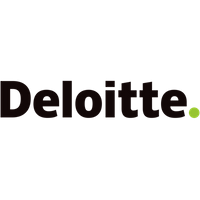Communicating reward and benefits to meet emerging employee and business needs
Employee communication plays a critical role in creating engaged, loyal and motivated employees.
Authentic communication tells your story, connects hearts and minds, brings employee and shareholder interests together, supports your most valuable asset (your people) and drives that all-important return on investment (ROI).
Yet communication of reward and benefits is not so easy.
Changing needs and expectations
Reward and benefits are complex, personal and emotive.
Promoting a financial product, like an insurance or pension scheme for example, may only benefit an employee over time or there may be many years before they receive a return (if ever).
The value of your own reward and benefit package is wholly subjective, too.
What benefits or motivates someone at the start of their career may hold no value or interest for an individual approaching retirement; our multi-generational, diverse workforces have continual changing needs and expectations.
Complex, disparate providers, systems, solutions coupled with a mishmash of internal communication channels, networks and resources make engaging, reaching and supporting employees even harder.
Add to that time pressures, internal team capabilities and capacity, and the all too familiar budget constraints and it’s no surprise that 36% of employers think their benefit communication require urgent attention and more than half (56%) of respondents in REBA’s Benefits Design Research 2024 have signed off on a strategic transformation project to focus on benefit communication. This is without doubt a hot topic on everyone’s to do list.
So, how do you make your employees aware and appreciative of the reward and benefits you have on offer?
Here’s our top tips:
- Set targets: Be clear on what you want to achieve and how you are going to measure communication success. Can you collect product sign up, recruitment and attrition rates, support line queries and tickets, survey responses or more qualitative feedback?
- Know your audience: This may sound basic, but do you really know your people? Where and how do they receive information about their day-to-day work, and the things which matter most to them (pay, learning, team, health and safety, technology)?
- What’s your story? A big creative idea sets the tone, creates an emotional connection. It pulls together the visual and the message into a compelling story, and lets employees know what’s in it for them, why they should pay attention, read listen or watch the communications you’re sending them.
- Think channels: We all learn in different ways. Around 35% of us are visual learners who prefer graphics, icons, maps and timelines. About a third (30%) of us are aural learners who want podcasts, radio, discussion groups, web chats. We retain 65-75% of information when presented both visually and aurally, via video or animation. Multimedia approach engages multiple senses and improves effectiveness of information retention.
So, how are others doing it and what are they finding successful?
- Be inclusive: One large UK employer tackled this head on. Hourly paid, time poor staff were not aware of or able to grasp the true value of their benefits. Bespoke, persona-based communications, a new reward brand and visual identity grabbed their attention, deployed digitally and physically around the workplace. Accessible, employee centric and results driven, they saw intranet hits increase by 26% and benefit page engagement up by 15%.
- Go digital: Pushing the boundaries with personalised or interactive experiences is where the front runners are finding success and winning awards. Within the FTSE100 this has come to life through tailored individual experiences which truly answer for employees ‘What does this mean for me?’.
Such businesses are offering personalised animated, video and voice experiences with either data rich, tailormade stories or choose-your-own adventure style content. These media are highly effective in engaging and exciting employees in their reward programmes where typically the complex can appear inaccessible and result in underappreciation of offerings.
- Be human: A UK accounting software company found peer to peer, lateral employee style communication works wonders in engaging, reassuring and normalising complex technical and financially complex reward programmes. By watching and hearing from colleagues, employees relate more personally to the topic and respond. In introducing this video format, take up to the programme recently hit 29%.
- Mix it up: On a far different scale but no less effective, a large global food and beverage company run an annual global communication campaign for their share award benefit for their 100,000 employees. A multimedia campaign that includes posters, flyers, website, animation and emails. They translate into over 30 languages and directly link the creative proposition to their global brand, purpose and mission.
- Keep it real: A UK software business in a nod to their own business, mission and purpose, used digital, personal communication to land a new programme with employees. Keen to give user friendly intuitive employee experience, they created interactive guides and animations for their people.
Engaging and on-brand graphics, real-life examples and timelines met all employee learning styles and scenarios. In less than two weeks, 62% of employees enrolled in the programme, it featured in the top five most popular company benefits and they saw a significant reduction in attrition.
The thread of success running through these stories leads us through themes of creativity, digitalisation, personalisation and ease of access.
However, what ultimately makes cracking the communication nut possible is a greater business commitment and purpose.
With a considered, employee-centric approach, the right engaging story, backed by appropriate team, tools and budgets, there are excitingly tangible strides of all sizes to be made in how we make the most of communicating reward and benefits.
Supplied by REBA Associate Member, Deloitte
At Deloitte, we think and do benefits differently.








